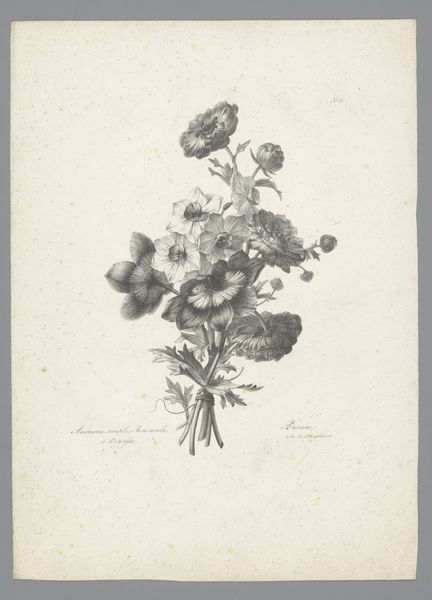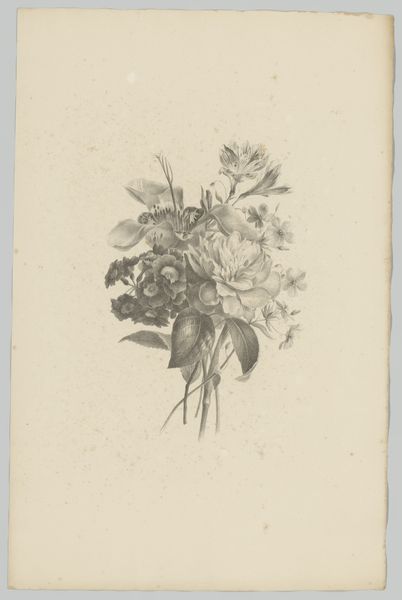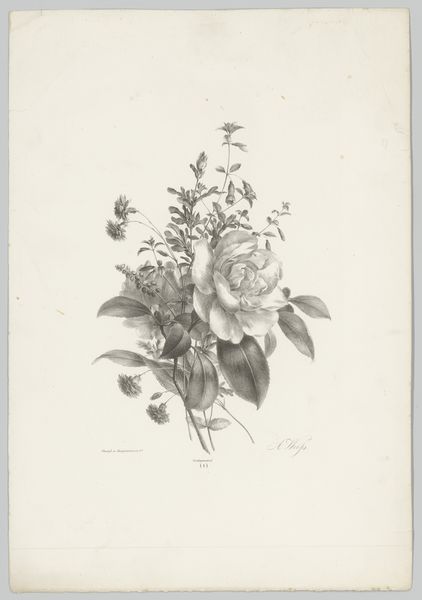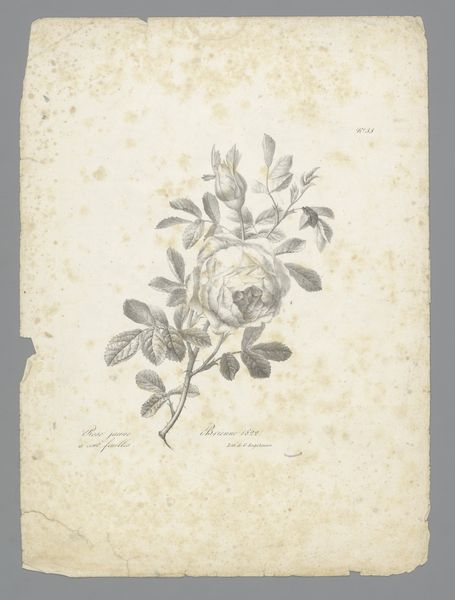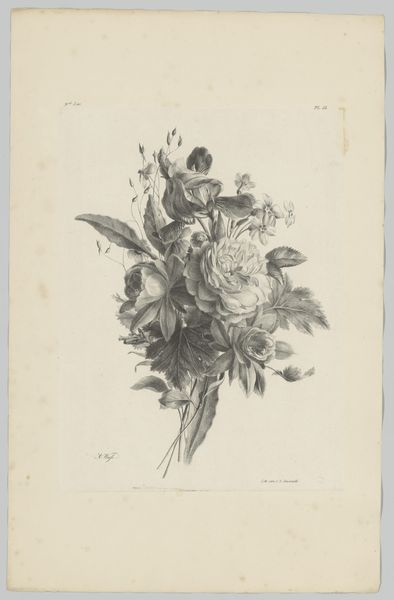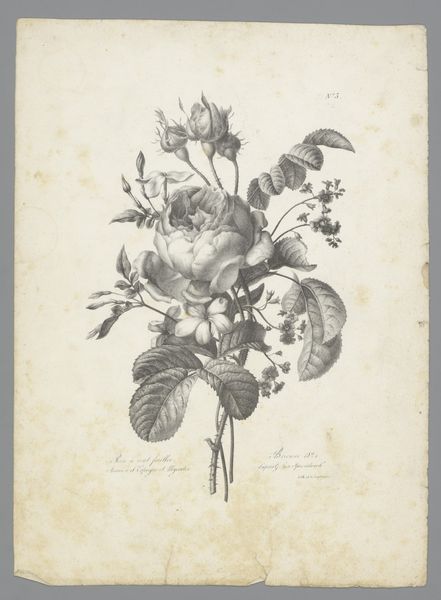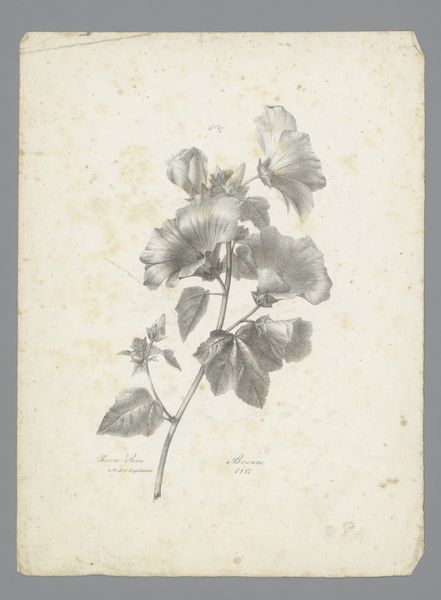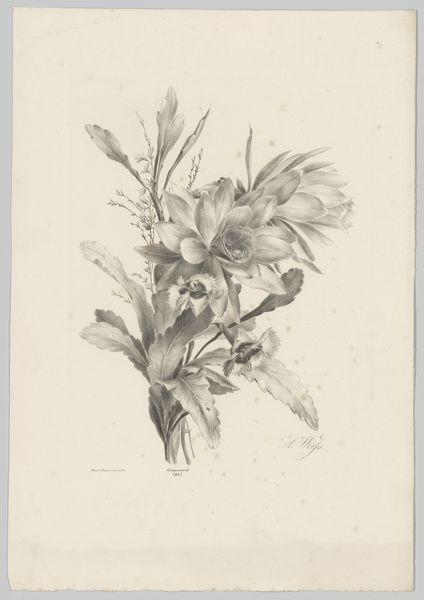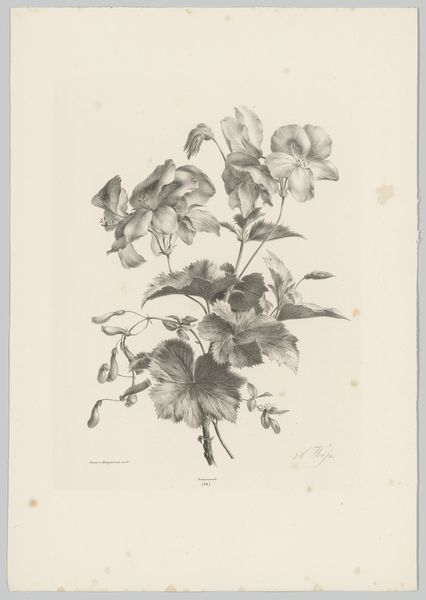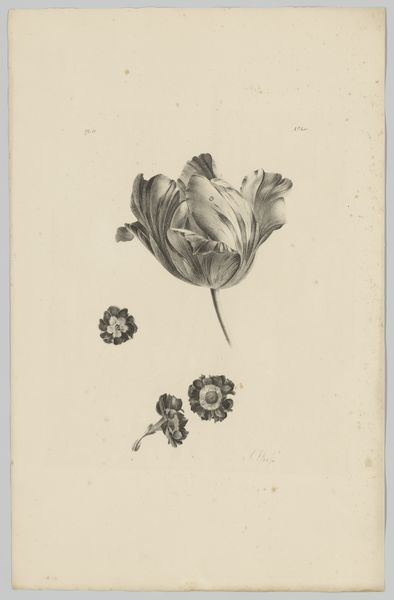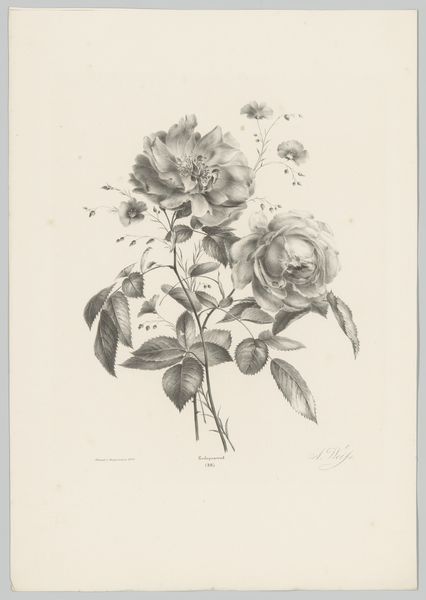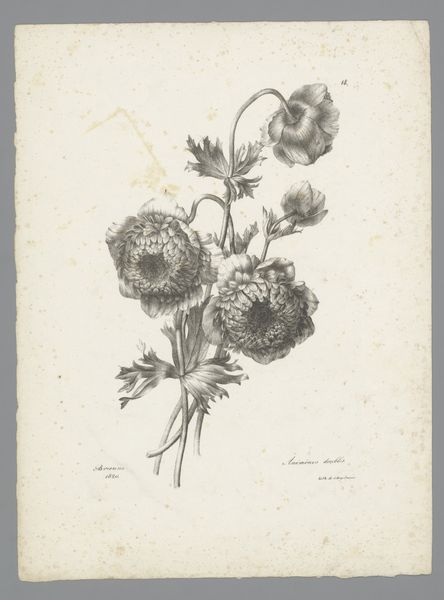
drawing, pencil
#
drawing
#
coloured pencil
#
romanticism
#
pencil
#
realism
Dimensions: height 369 mm, width 282 mm
Copyright: Rijks Museum: Open Domain
Curator: This exquisite drawing, rendered around 1830 by Auguste Piquet de Brienne, is entitled "Boeket met zachtroze roos en koolroos"—or "Bouquet with soft pink rose and cabbage rose." It currently resides here at the Rijksmuseum. Editor: My first impression is of faded elegance. It possesses a certain melancholic beauty, heightened by what appears to be pencil and coloured pencil on paper. The softness of the textures almost suggests fragility. Curator: Exactly. It's interesting to consider floral imagery in the context of 19th-century Romanticism. The symbolism of flowers during that era was highly codified, often used to express unspoken emotions, particularly within the constraints of gender and social expectations for women. Editor: Right, the bloom becomes almost a stand-in for the feminine itself. The artist's hand, though, is very present here. I’m struck by the way the textures have been rendered; I am also very aware of the craft and production of such detailed artworks during the time when it was created, like this delicate and controlled use of drawing media which allows for such fine work, perhaps the paper, pigments themselves speak to a world beyond beauty. Curator: It begs us to question if that delicate realism is just about representing something pretty. Instead, the rose can become a site to study issues around, say, ideals of feminine beauty. Do those ideals ultimately become a restriction? Where does beauty intersect with notions of decay, impermanence? Editor: That resonates deeply. There's the life cycle—from the tightly wound bud to the fully opened bloom, with its petals about to fall—speaking about both natural material and then how nature in general becomes commercialized through painting. It invites us to see this botanical study as part of broader socio-economic activity. Curator: By studying these objects as material and social indicators, we learn something of the power dynamics and expectations of gender through beauty. Thank you for adding dimension and revealing what might initially have appeared merely decorative and, frankly, safe. Editor: Thank you for your contextual perspective, by putting process and beauty in a historical timeline, it transforms the perception of beauty, revealing labour and then commercial aspects surrounding nature.
Comments
No comments
Be the first to comment and join the conversation on the ultimate creative platform.


